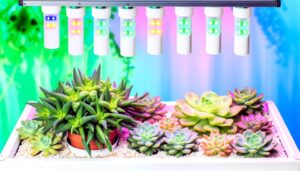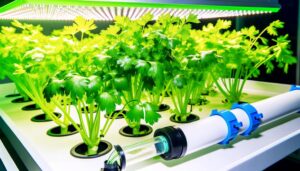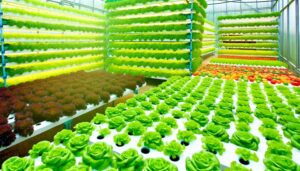Hydroponic Vs Soil Pros and Cons
Hydroponic systems achieve up to 25% faster growth rates and 30% greater yields compared to soil cultivation due to precise control over nutrient delivery and environmental conditions, despite their higher initial setup costs and intense maintenance requirements. While hydroponics conserves water and reduces pesticide use, it demands significant energy inputs.
Conversely, soil-based farming benefits from natural sunlight and lower starting costs but faces challenges like soil degradation and less efficient space utilization. Both methods present unique pros and cons regarding productivity, cost, and sustainability, essential aspects to contemplate for ideal agricultural practice.
Continue exploring for a deeper comparative analysis.

Key Takeaways
- Hydroponic systems achieve up to 25% faster growth rates and 30% higher yields compared to soil cultivation.
- Initial setup costs for hydroponic systems are significantly higher than those for soil-based farming.
- Hydroponics requires continuous monitoring of pH, nutrient levels, and water quality, demanding more technical expertise.
- Hydroponics utilizes less water through closed-loop designs but requires significant energy inputs for lighting and climate control.
Growth Speed and Yield
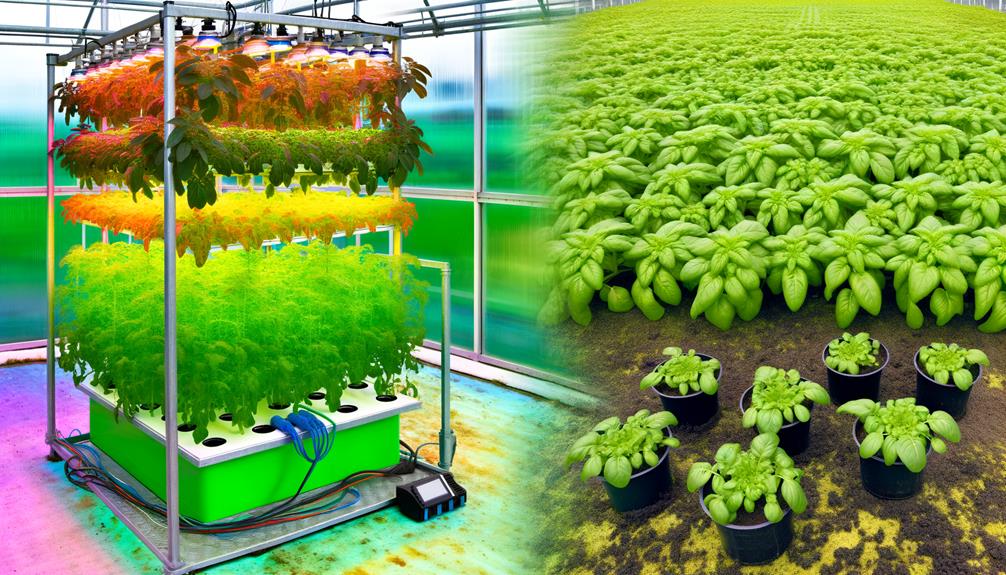
In comparing growth speed and yield between hydroponic systems and traditional soil cultivation, hydroponics generally demonstrate faster growth rates and higher yields due to optimized nutrient delivery and controlled environmental conditions.
Empirical studies reveal that plants grown hydroponically can achieve up to 25% faster growth and 30% greater yields compared to soil-grown counterparts. This is attributed to the precise control over nutrient concentrations, pH levels, and oxygenation in hydroponic solutions.
Additionally, hydroponic systems mitigate soil-borne diseases and pests, which can hinder plant productivity in traditional agriculture. Controlled environment agriculture (CEA) techniques, including lighting, temperature, and humidity regulation, also enhance plant growth efficiency.
Consequently, hydroponics presents a compelling alternative for maximizing agricultural productivity in a sustainable manner.
Initial Costs
While hydroponic systems offer notable advantages in growth speed and yield, the initial costs associated with setting up these systems can be markedly higher compared to traditional soil cultivation. Such costs include specialized equipment, nutrient solutions, and environmental control systems. In contrast, soil-based agriculture requires fewer upfront investments, primarily involving basic tools and soil amendments. The table below details a comparative analysis of initial cost components for both methods:
| Cost Component | Hydroponic Systems | Soil Cultivation |
|---|---|---|
| Setup Infrastructure | High | Low |
| Nutrient Solutions | High | Low |
| Environmental Control | High | Moderate |
| Equipment | Specialized | Basic |
| Initial Investment | Higher | Lower |
This analysis underscores that while hydroponics can lead to superior productivity, the financial barrier to entry is markedly greater.
Maintenance Requirements

Maintaining hydroponic systems demands meticulous attention to nutrient balance, water quality, and environmental conditions, whereas soil cultivation relies more on periodic soil amendments and traditional farming practices.
Hydroponic systems require continuous monitoring of pH levels, electrical conductivity (EC), and dissolved oxygen to guarantee peak plant growth. Automated systems can aid in this, yet the precision needed can be labor-intensive.
In contrast, soil cultivation involves tasks like tilling, weeding, and mulching, which are labor-intensive but less technically demanding. Soil naturally buffers nutrient imbalances and provides a more stable growing environment, reducing the frequency of intervention.
Consequently, hydroponics offers higher control but requires rigorous oversight, while soil farming leverages natural processes, demanding less technical expertise but more manual labor.
Environmental Impact
Evaluating the environmental impact of hydroponic and soil-based farming requires an analysis of resource consumption, waste generation, and ecological footprint.
Hydroponic systems often have a lower water usage due to their closed-loop design, which recirculates water, reducing waste. However, they require significant energy inputs for lighting, climate control, and nutrient delivery.
Soil-based farming, conversely, utilizes natural sunlight and less energy but can lead to soil degradation, erosion, and nutrient runoff, which contaminates water bodies.
Additionally, hydroponics can minimize pesticide use through controlled environments, reducing chemical runoff.
Both systems exhibit trade-offs: hydroponics prioritizes water efficiency and reduced chemical impact, while soil-based farming benefits from lower energy dependency but faces challenges in sustainable land management.
Space Efficiency
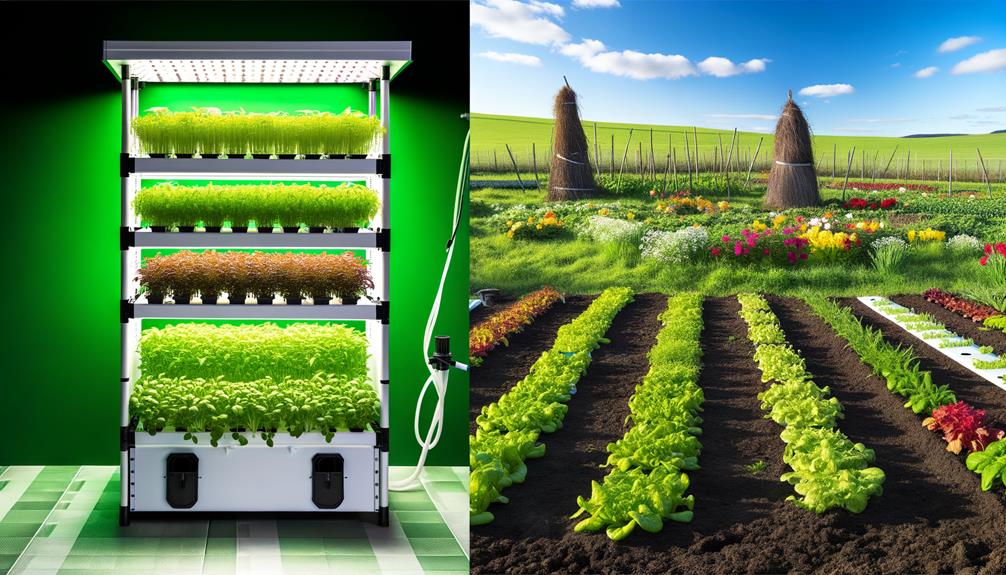
Optimizing space efficiency, hydroponic systems can produce higher yields per square foot compared to traditional soil-based farming. This increased productivity is partly due to the vertical stacking capability and controlled environment, which allows for denser plant populations and accelerated growth cycles. In contrast, soil-based farming is constrained by horizontal space and the natural limitations of soil health.
| Factor | Hydroponic Systems | Soil-Based Farming |
|---|---|---|
| Yield per Square Foot | Higher | Lower |
| Vertical Stacking | Feasible | Not Feasible |
| Controlled Environment | Yes | No |
| Space Utilization | Optimized | Limited |
| Plant Density | Higher | Lower |
Hydroponic systems consequently offer a more efficient use of space, making them ideal for urban and constrained environments where maximizing every square foot is vital.
Conclusion
In the comparison of hydroponic and soil-based cultivation, hydroponics emerges as the racecar of agricultural methods, offering accelerated growth and higher yields.
However, this speed comes at the expense of higher initial costs and meticulous maintenance.
Soil-based methods, while slower, offer a more traditional and environmentally integrated approach.
Both methods present unique advantages and challenges, making the choice dependent on specific needs, available resources, and environmental considerations.
Consequently, the decision must be tailored to align with individual agricultural objectives.

